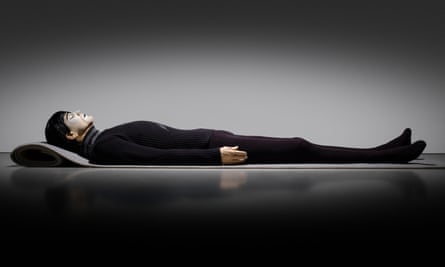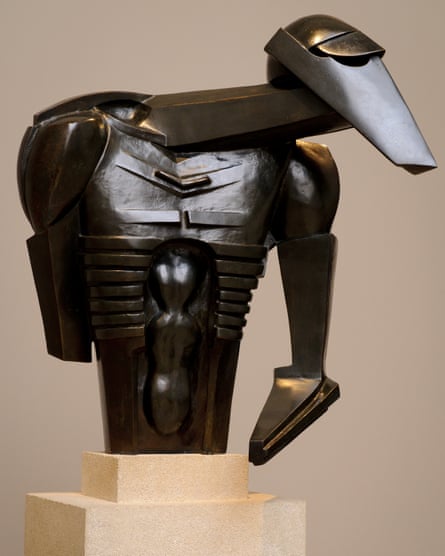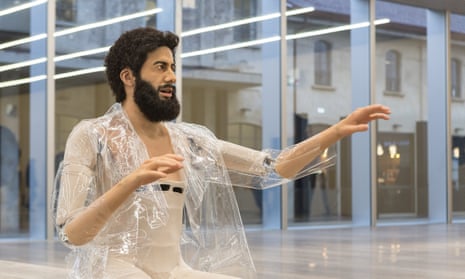The androids have arrived, at least a century after modern art prophesied them. Artificial humans are advancing from the screens and pages of science fiction into our art galleries to look their flesh and blood cousins eerily in the eye.
Artist Goshka Macuga, shortlisted for the Turner prize in 2008, has created a talking android for the Fondazione Prada in Milan which is now on show at the Schinkel Pavillon in Berlin. It has black hair and bushy beard and talks philosophy: an intellectualtake on the Action Man toys I used to play with as a child. Macuga’s robot has all the spooky uncanniness of a synthetic person with a realistically moulded face and bionic arms. Most robots have futuristic names, or cosy ones to suggest they are cute and friendly. Macuga’s creation is called To the Son of Man Who Ate the Scroll.

It was modern art that helped invent robots more than a century ago. Macuga pays homage to this history in the same show with a spooky simulacrum of the Somnambulist, the hypnotised – or in 21st-century terms “programmed” – human puppet from the 1920 expressionist film The Cabinet of Dr Caligari. The Somnabulist is a flesh and blood automaton. Yet the idea of mechanical replacements for human beings was well established in art when this avant garde horror film was made.

Consider The Rock Drill. On the eve of the first world war the British sculptor Jacob Epstein created this visionary work of art in which a metal creature, whose post-human body comes from a terrifying future age, operates a machine that merges with its own hi-tech form. Its long, staring face is both menacing and somehow sad. The Rock Drill’s resemblance to contemporary science fiction is extraordinary. Its nightmare future still haunts the modern imagination.
Epstein started making The Rock Drill in 1913, seven years before Karel Čapek “invented” the robot in his play RUR, or Rossum’s Universal Robots. Čapek based the word on the medieval Slavonic term “rabota”, meaning forced labour. Robots were invading modern art several years before they even got their name. Constantin Brancusi’s Portrait of Mademoiselle Pogany (1912) is more a big-eyed alien baby than a robot, but its sci-fi look is undeniable. And the greatest of art’s robot pioneers was surely Marcel Duchamp.
In his 1912 painting Nude Descending a Staircase, the sly Duchamp imagines a dehumanised human, a mechanical bride for the modern world. His machine-like rendering of the human body shocked visitors to New York’s Armory exhibition in 1913, but Duchamp was just starting out on his radical rethinking of human nature. By 1915 his post-human paintings were evolving into something stranger still, The Bride Stripped Bare by Her Bachelors, Even, a huge allegory on two vertical glass panels in which Duchamp imagines men as masturbatory machines hopelessly desiring their elusive robot woman.
Fast forward to 2016 and Macuga has put an android into an art gallery to ask again what it is to be human. It’s a question we will only ask more as machines become just like us.

